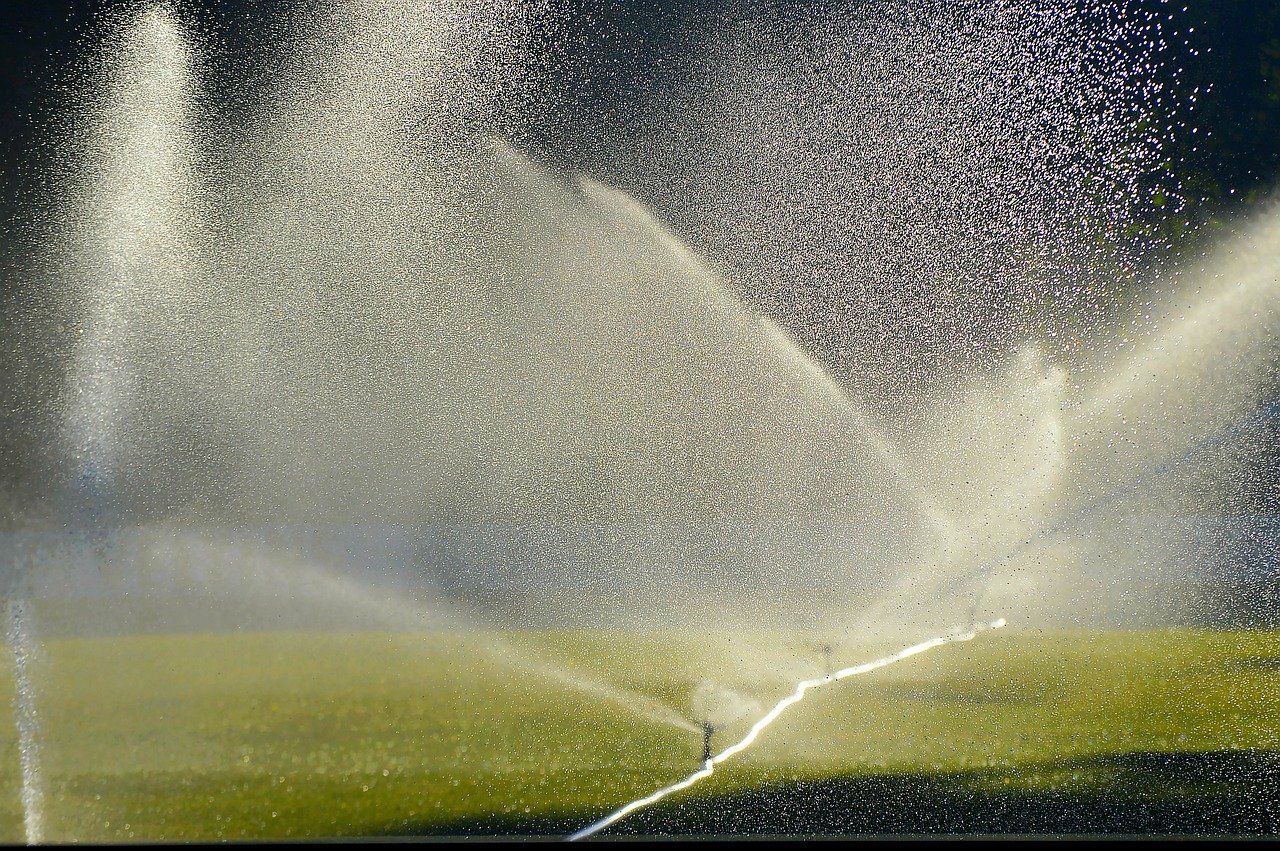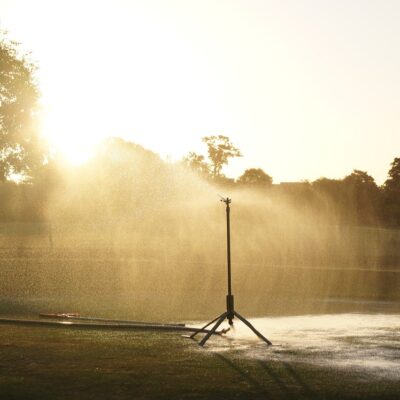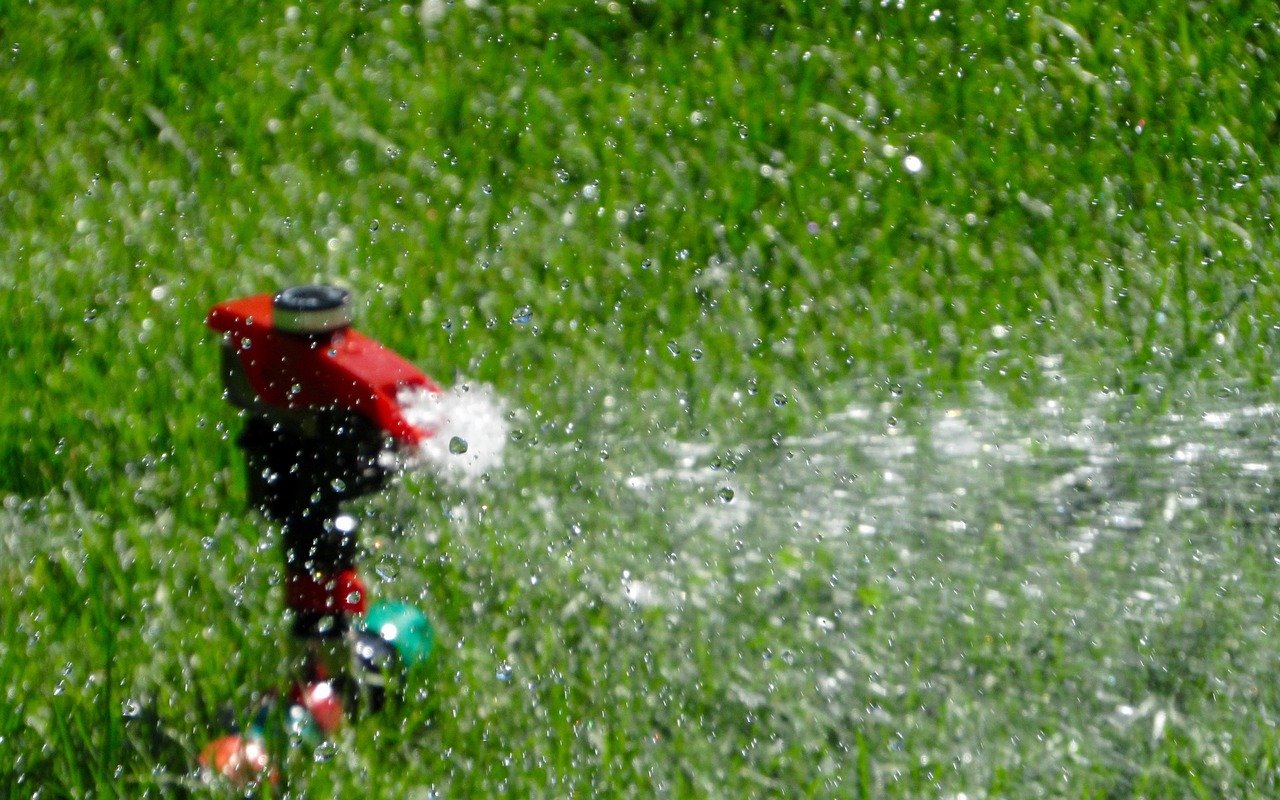The main reason for making sure there is no water in the pipes and pumps is to prevent frost damage.
A well designed irrigation system will have drain valves around the pipe work at hopefully, the lowest points! To get these to work and the water to come out, air must get in. However it is not normally necessary to blow the system out with compressed air in the UK, but if winters get fiercer and the Gulf Stream stops, it may become necessary.
To drain the pumps, the drain cocks top and bottom of the pump must be opened and the flanges at the pump inlet loosened. Before this is done, it is important to isolate the pump power, preferably by pulling the fuses or padlocking the isolation switch in its off position.
This will prevent inadvertently running the pumps dry. All drain cocks must be left open, as water can slowly pool at that point. If it freezes, the damage may still happen there
Most sprinkler types have a check valve to stop a low-lying one from draining the system through it, even when off. Each valve box will also have a hose point. Opening this will let the water out and the air in.
Once the water leaves that area, the solenoid valve will be drained at its supply side. What will not drain however is its side connected to the sprinkler and in the sprinkler body. In the UK, the frosts hitherto have not been fierce enough to freeze the water trapped in this area, which is below ground. If this becomes a worry, then this section will have to be blown with compressed air. To do this, a compressor point must be plumbed into the lateral between the solenoid valve and the sprinkler.
During the winter months, it is important to keep the irrigation controller powered up and running a ‘dry’ watering cycle, once a day. This has several beneficial effects.
Firstly, the pins in the solenoids are exercised. This helps drain the top of the diaphragm and stops the pin from seizing up in a hard water area. Secondly, the controller is kept warm and free from condensation internally. Thirdly, any electrical problems are shown up before the system is needed in the spring.
A daily cycle of one minute per station is ideal for these purposes.
The water tank needs attention too. Its level must be drained so that the ball for the level sensing is hanging free. If this is not done, the ball may be left embedded in a sheet of ice, which, if it becomes unsupported from below, could rip the whole level sensing assembly to pieces.
The above ground tank feed from a borehole or mains water must also be drained. Likewise, any pipe emanating from the tanks to the pumps must be valved off and drained.
How long all this will take depends on how well the system has been designed. If drain points are missing, having them instated may well pay back quickly in subsequent labour savings and freedom from damage.
It would make good sense to reverse this procedure before the irrigation is needed. All too often this is left until the grass is becoming stressed. It is not unusual for irrigation installers to receive dozens of phone calls a day during a dry spell in the spring. Clearly, not everyone can be serviced at the same time; ill feeling and rows frequently happen as a consequence.


